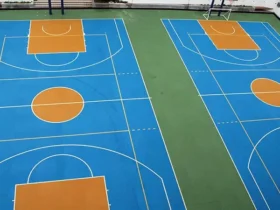What: This article explains a step by step guide to building FPV drones in India.
Why: This article’s objective is to guide people in exploring all available options for building FPV drones in India.
An FPV drone, or a First Person View drone, is a radio-controlled drone equipped with a camera that provides a real-time video feed to the pilot. India is not an exception to the global trend of enthusiasts taking an interest in FPV drones.
Building FPV drones from the bottom up is becoming more and more popular as technology develops and the drone community grows. You can make your very own FPV drone by following the instructions in this article.

Table of Contents
Drone parts: Choosing the RIGHT components
Before starting to make an FPV drone, you must gather the necessary equipment. You can get by with just a few simple tools when you first start.
This section contains detailed lists of every part that builds up the drone.
- Drone Frame
- Motors
- ESC (Electronic Speed Controller)
- Flight Controller
- Transmitter and Receiver
- Propellers
- Propeller Guards
- Batteries
How to Build an FPV Drone: Step-by-Step Guide
Step 1: Assembling the Frame
Lay out all of the frame components to determine the standoffs, arms, and base plate. Assemble the frame securely by following the manufacturer’s guide. Make sure that the frame is strong and that all the screws are tight.
Step 2: Mounting the PDB (Power Distribution Board)
Install the Power Distribution Board into the frame’s centre. This is necessary to provide power to every part of the drone in a similar way. Use insulated wires to connect the PDB to the battery terminals.
Step 3: Mounting the Motors
Attach the motors to the arms of the frame using the provided screws. Make sure the motors are aligned properly and securely fastened. The motor orientation is usually marked on the motor housing.
Step 4: Mounting the ESCs (Electronic Speed Controller)
Mount the ESCs on the arms close to the motors. Secure them with zip ties or heat shrink tubing. The ESCs regulate the speed of the motors, so positioning them correctly is important.
Step 5: Connecting the ESCs to the Motors
Use motor wires to connect the ESCs to the motors. Pay attention to the correct order of wires; typically, there are three wires, and connecting them incorrectly can lead to issues.
Step 6: Connecting the ESCs to the PDB
Connect the ESCs to the Power Distribution Board. Ensure a neat and organised layout to avoid interference and make troubleshooting easier later on. Double-check the connections to avoid any potential issues.
Step 7: The First Test!!!
Before proceeding further, power up the drone and test the motors using a transmitter or a dedicated tool. Verify that each motor is spinning in the correct direction. If there are any issues, troubleshoot and fix them before moving on to another step.
Step 8: Mounting the FPV System
Attach the video transmitter and FPV camera to the frame. As for the correct positioning, refer to the manufacturer’s instructions. To reduce vibrations and possible damage during flights, secure the components.
Step 9: Connecting the FPV System
Using the proper wires, connect the FPV camera and video transmitter. When flying, make sure the connection is secure to ensure a steady stream of video
Step 10: Test the FPV System
Turn on the drone and give the FPV system a try. Examine the live stream on your monitor or FPV goggles. If needed, change the camera’s angle to get the greatest perspective while in flight.
Step 11: Mounting and Powering the Receiver
Attach the receiver onto the frame, making sure to position the antenna correctly. Connect the receiver to the Power Distribution Board and bind it to your transmitter. Verify that all channels respond correctly.
Step 12: Wiring the Flight Controller
Connect the flight controller to the PDB, ESCs, and receiver. Follow the flight controller’s manual for proper wiring. Secure any loose wires and ensure a clean build.
Step 13: Completing the Build
Double-check all connections, secure loose components, and make sure there are no exposed wires. Neatness and attention to detail will make future maintenance easier.
Step 14: Software Configuration
Install the necessary firmware on the flight controller. Use a computer and follow the manufacturer’s instructions for configuration. Calibrate the sensors, set up flight modes, and configure other settings according to your preferences.
Step 15: Final Test
Perform a final test by arming the drone and checking motor responses. Verify that the flight controller responds correctly to transmitter inputs. The first flight of your FPV drone is ready if everything checks OK. Ensure you are in a safe location, and follow all local regulations and safety guidelines for drone flying.
Common Problems and Their Solutions
Some of the major problems faced while flying drones are listed below, along with their solutions:
- The props are often in the frame
A drone’s body leans forward when travelling quickly, which could result in propellers being captured in the picture. There are two fixes:
- Adjust Camera Angle: Change the camera angle to stop propellers from interfering with the view.
- Reduce Flying Speed: Reduce the drone’s speed to minimise nose tilt.
Changing the camera angle is a more efficient solution that gives you greater control of crystal-clear and unobstructed footage.
- The screen’s transmission is not smooth
Screen transmissions in UAVs face challenges in receiving distance and interference. Picture stability decreases at important points. After the effective distance of 70% of the given range, it affects the clarity of the screen. The interference difficulty involves drones operating normally after avoiding disturbances, such as cables or communication towers. To ensure secure transmission, UAVs must keep a safe distance from high-voltage wires, which provide a unique risk.
- Blocked GPS signals
It’s critical to optimise GPS satellite signal reception to improve UAV flying stability and accuracy. GPS reception in open places may be problematic because walls, rocks, and underground cables block satellite signals. Since more GPS satellite signals promote overall flight stability, moving to regions with over 100 degrees of satellite visibility is advised.
- Abnormal flight direction
While it’s advised to check the compass before every flight, users frequently find it difficult. This neglect can lead to problems like tilting or improper flying direction. To fix and manage the drone’s landing, adjust the compass and make sure the remote control settings are accurate by restarting or resetting the device as necessary. Correcting the flying direction of a UAV requires monitoring and modifying remote control activities.
- UAV signal lost
Even with advanced UAV technology, signal loss might happen occasionally. Remain calm, as UAVs with GPS typically have a way to return. Reduce the distance by getting closer to the UAV, try reconnecting, and think about resetting the remote control to regain control. Return mechanisms that are pre-set help in preventing accidents caused by signal loss.
- The drone battery problem
Shorter flight times are caused by lipo battery difficulties, which are common. Use the recommended charger, avoid overcharging, and stop using the battery when the battery is used over 80% to maximise its lifespan. To ensure safe and pleasurable drone flying, drone enthusiasts can take longer footage with proper maintenance and awareness of lipo battery care.
Benefits of Making Own Drone
- Cost-effectiveness
Constructing your drone allows for fine customization to match your preferences and budget. This also offers significant cost savings. Purchasing individual parts guarantees cost-effectiveness by removing unwanted features. For hobbyists and enthusiasts who want to explore drone technology without going over budget, this makes a great and economical option
- Customisation options
Complete customisation is possible when you build your drone, since you may modify the frame, motor, camera, and sensors to suit your requirements. Whether you’re interested in scientific study, racing, or aerial photography, this customisation guarantees peak performance. Moreover, the drone has an edge over pre-assembled solutions due to its capacity to change its components over time, which results in increasing its lifespan.
- In-depth knowledge of drone technology
You can gain a brief understanding of drone technology by taking part in a self-project. Studying aerodynamics, electronics, programming, and communication protocols is necessary while building a drone from the ground up. Together with developing technical abilities, the hands-on training helps students understand unmanned aerial vehicles better. With the obtained information, one may stay informed about drone technology advancements, troubleshoot drones effectively, and make educated alterations.
Wrapping Up
Making your own FPV drone in India is essentially like setting out on a customised, low-cost journey. It helps you to get an in-depth knowledge of drone technology. This detailed guide simplifies the procedure, helping you overcome obstacles and gain an understanding of drone technology. It is a hands-on experience that improves your troubleshooting abilities. It keeps you informed of the most recent innovations and is not just about owning a personalised drone. According to experts at CDR Report Writer, constructing your own FPV drone is a quick, but incredibly rewarding, way to explore the exciting world of unmanned aerial vehicles.
FAQs
- What is the purpose of making a drone?
A drone serves various purposes, including aerial photography, surveillance, search and rescue, recreational flying, and commercial applications like delivery and mapping.
- Can I legally fly an FPV drone in India?
Yes, you can legally fly an FPV drone in India.
- Are there any restrictions on using FPV drones in India?
There are no specific restrictions on FPV drones in India, but general aviation regulations, safety guidelines, and local restrictions must be followed.
- Can I participate in FPV drone racing events in India?
Yes, you can participate in FPV drone racing events in India, subject to event-specific rules and regulations.










